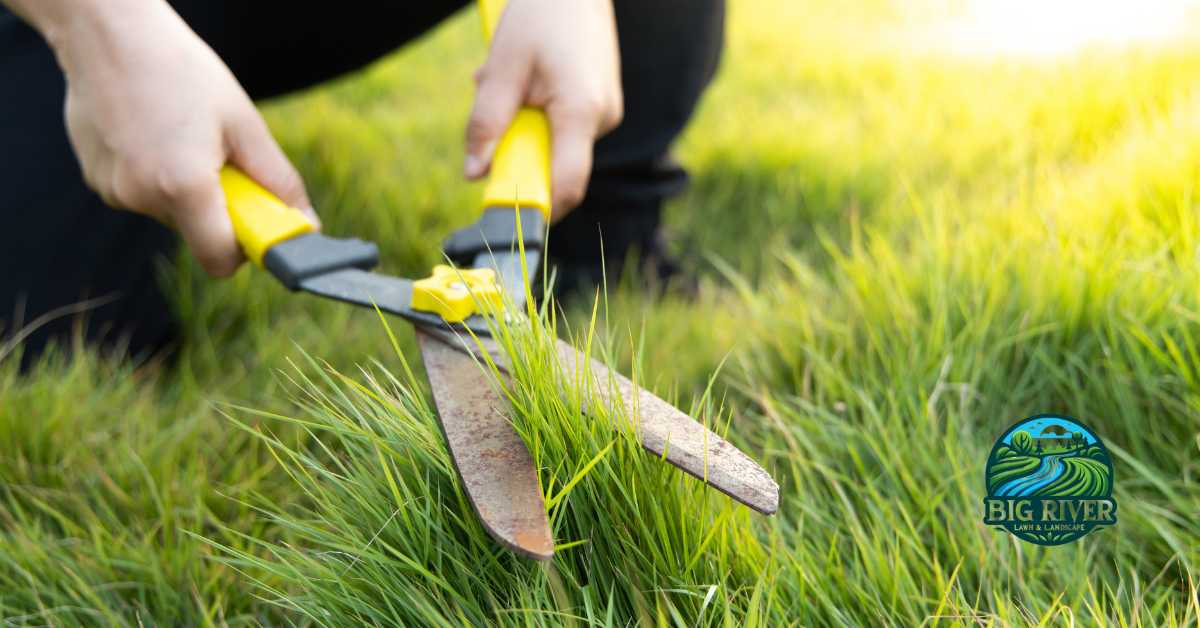A well-maintained lawn not only enhances the aesthetic appeal of your home but also contributes to a healthy environment. Cutting your lawn may seem straightforward, but achieving that lush, pristine yard requires attention to detail and proper techniques. Regular lawn cutting also helps prevent pests and promotes uniform growth. Here’s a comprehensive guide to help you master the art of lawn mowing.
Understanding Your Lawn
A thriving lawn begins with understanding its unique characteristics and requirements. Then, how to cut lawn? Knowing the type of grass you have and regularly assessing its condition allows you to tailor your care practices effectively. This foundational knowledge is crucial for making informed decisions about mowing, watering, and overall lawn maintenance.
Identifying Your Grass Type
The first step in proper lawn care is identifying your grass type. Different grasses have varying needs regarding watering, mowing, and fertilization. Common types include Bermuda, Kentucky Bluegrass, and St. Augustine. Each type has a recommended cutting height to maintain health and vitality. Knowing whether you have cool-season or warm-season grass will dictate when to stop cutting your lawn as the seasons change.
Assessing Lawn Conditions
Before mowing, assess your lawn’s overall condition. Look for signs of pests, diseases, and uneven growth. This assessment will help you adjust your mowing technique and address specific issues that may arise. It’s essential to check the soil moisture as well; overly dry or wet conditions can affect when and how you should mow.
Equipment and Tools
How to cut lawn? Having the right equipment and tools is essential for efficient and effective lawn care. From choosing the right lawn mower to selecting the best accessories, each piece of equipment plays a vital role in achieving a well-manicured lawn. Proper tools not only make the job easier but also ensure that your lawn stays healthy and attractive.
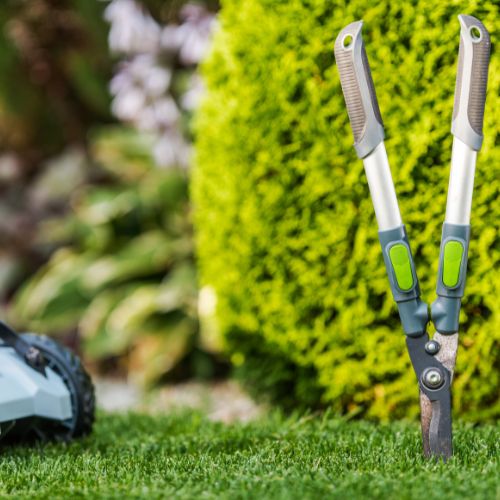
Choosing the Right Lawn Mower
Selecting the right lawn mower is crucial. Consider your lawn’s size and terrain when choosing between a push mower, riding mower, or a robotic mower. Each type offers different benefits depending on your lawn’s complexity and your personal preferences. The right mower can make the job easier, especially when deciding how much to cut lawn during each session.
Essential Mowing Accessories
Invest in a good pair of gardening gloves, safety goggles, and ear protection. These accessories ensure safety while operating noisy mowers. Additionally, consider a lawn edger or trimmer for a clean finish around sidewalks and beds. A grass catcher can also be useful if you prefer not to leave clippings on your lawn.
Preparing to Cut The Lawn
How to cut lawn? Proper preparation before cutting sets the stage for a successful lawn care session. Ensuring your lawn is free from debris and your mower is correctly set up are critical steps. This preparation helps in achieving an even cut and preventing damage to both your lawn and your equipment.
Lawn Preparation
Remove any debris such as branches, stones, and toys from the lawn. This not only protects your mower’s blades but also ensures an even cut. Check for moisture levels in the soil; the best time for mowing is when the lawn is dry but not desiccated.
Mower Setup
Set your mower blade to the ideal lawn cutting height. For most grass types, the best height to cut the lawn is about one-third of the grass blade to promote healthy growth and root development. This setup minimizes stress on the grass, helping it recover faster after each cut.
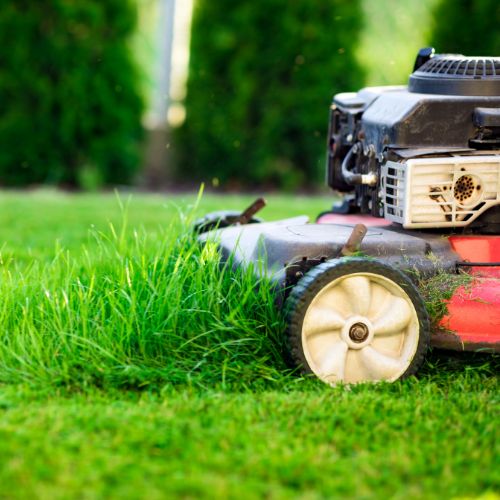
Lawn Cutting Techniques
Employing the right mowing techniques can make a significant difference in the health and appearance of your lawn. Whether you’re dealing with basic cuts, navigating tricky areas, or adjusting for different conditions, mastering these techniques ensures your lawn remains lush and even. Understanding the nuances of mowing can transform your lawn care routine from a chore into an art.
Basic Cutting Techniques
Start by mowing the perimeter of your lawn and then move inwards in straight, overlapping rows. This technique ensures you cover the entire area without missing spots. Make sure to alter your mowing pattern each time to prevent the grass from leaning in one direction.
Mowing Difficult Areas
For slopes and corners, slow down and adjust your mower’s speed and direction carefully to maintain control and ensure even cutting. Utilize trimming tools to neatly cut the edges of a lawn where mowers might not reach effectively.
Adjusting Techniques Based on Lawn Condition
In dry conditions, avoid cutting too short to prevent stress on the grass. During wetter periods, you might need to mow more frequently to keep up with growth. Adjust your mowing frequency based on the season and growth rate, like how often should you cut your lawn in the summer.
Post-Cutting Care
Taking care of your lawn doesn’t end once you finish mowing. Post-mowing care, such as handling clippings, helping the lawn recover, and regular maintenance, is vital for sustaining a healthy yard. These practices ensure your lawn remains vibrant and ready for the next cut, maintaining its pristine condition.
Handling Grass Clippings
You can leave clippings on the lawn as mulch to return nutrients to the soil, or collect them if they are too thick and risk smothering the grass. If you choose to mulch, ensure the clippings are finely chopped to enhance decomposition and nutrient release.
Lawn Recovery Tips
After mowing, water your lawn to help it recover, especially if the weather is dry. This helps in deeper root growth and nutrient absorption. Avoid watering immediately after mowing to allow the grass blades to heal from the cuts.
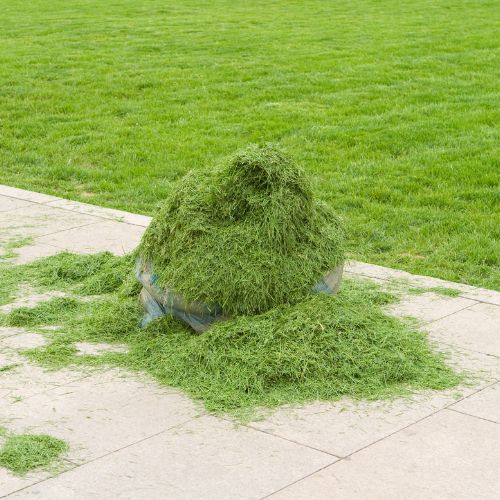
Regular Maintenance
Regularly sharpen mower blades, clean underneath the mower deck, and check for any signs of wear or damage to ensure optimal performance. Proper maintenance ensures that each cut is clean and healthy for the grass, reducing the chance of disease.
Troubleshooting Common Issues
Even with the best care, lawns can face various challenges. Knowing how to troubleshoot common mowing problems and conduct regular health check-ups can save your lawn from potential issues. This proactive approach helps in identifying and resolving problems early, ensuring your lawn stays in top shape.
Common Mowing Problems and Solutions
If your lawn appears uneven after mowing, check your mower’s blade alignment and tire pressure. Also, ensure you’re mowing at a consistent speed without abrupt changes. Sometimes, issues like scalping can occur if the mower is set too low or the lawn is uneven. Moreover:
- Dull Blades: A common issue is mowing with dull blades, which tear the grass instead of cutting it cleanly.
- Solution: Regularly sharpen mower blades to ensure a clean, healthy cut.
- Uneven Cutting Height: If your lawn looks patchy or uneven, the mower’s cutting height might be incorrectly set.
- Solution: Adjust the mower to a consistent height suitable for your grass type, generally between 2.5 to 3 inches.
- Clogged Mower Deck: Grass clippings and debris can accumulate under the mower, affecting its performance
- Solution: Clean the underside of the mower deck regularly to prevent buildup and ensure efficient mowing.
- Wet Grass Issues: Mowing wet grass can lead to uneven cuts and clumping.
- Solution: Wait until the lawn is dry before mowing to achieve a more even cut and reduce clumping.
- Wheel Ruts: Constantly mowing in the same pattern can lead to wheel ruts in the lawn.
- Solution: Alternate your mowing pattern each time to distribute wear evenly and prevent ruts.
- Scalping the Lawn: Mowing too low can scalp the lawn, causing brown spots and grass stress.
- Solution: Set the mower at a higher height, especially on uneven terrain, to avoid cutting the grass too short.
Lawn Health Check-Up
Regularly inspect your lawn for pest infestations or fungal diseases. Early detection and treatment can prevent serious damage. A healthy lawn starts with regular checks and balances, including monitoring growth patterns and making adjustments to your care regimen.
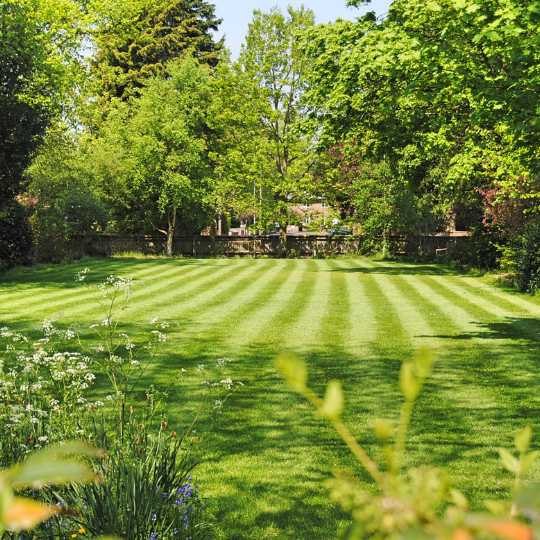
Advanced Lawn Care Tips
For those looking to take their lawn care to the next level, advanced tips can provide that extra edge. From enhancing the aesthetics with creative mowing patterns to adopting eco-friendly practices, these advanced techniques can make a significant impact. Elevate your lawn care routine with these expert strategies for a beautiful and sustainable yard.
Optimizing Watering Techniques
Master the art of watering by implementing smart watering schedules and techniques such as deep, infrequent watering. This approach encourages deeper root growth, leading to a more resilient lawn. Consider using soil moisture sensors and drip irrigation systems to optimize water usage and prevent wastage.
Soil Health and Fertilization Strategies
Deepen your understanding of soil health to tailor your fertilization strategies effectively. Conduct regular soil tests to adjust pH levels and nutrient content. Utilize slow-release fertilizers that provide nutrients gradually, supporting sustained growth and reducing the risk of runoff.

Integrated Pest Management
Adopt an integrated pest management (IPM) approach to deal with pests and diseases with minimal environmental impact. This includes monitoring the lawn regularly, identifying pest thresholds, and using biological control agents or eco-friendly pesticides as necessary.
Seasonal Lawn Care Adjustments
Adjust your lawn care practices with the changing seasons to maintain its health and appearance. This includes aerating in the spring or fall, adjusting mowing heights, and applying seasonal-appropriate fertilizers to prepare your lawn for different weather conditions.
Final Conclusion
Maintaining a pristine lawn requires understanding its needs, using the right equipment, and applying correct mowing techniques. Whether you’re dealing with the first lawn cut of the year or figuring out when to cut lawn after overseeding, each step you take contributes to a healthier, more attractive lawn. Remember, how often you should cut your lawn in the summer might differ from your spring or fall routine, so stay adaptive to your lawn’s feedback and enjoy the rewards of your hard work.
FAQs on How to Cut Lawn
How Often Cut Lawn?
The frequency of mowing depends on the growth rate of your grass and the season. Generally, during the growing season, you should cut your lawn once a week. However, during the peak of summer, when growth can slow down due to heat, mowing every 10 to 14 days might be sufficient.
How to Cut the Edges of a Lawn?
Cutting the edges of a lawn can be achieved using a string trimmer or an edger. For a clean finish, use the edger along sidewalks, driveways, and flower beds to create distinct, crisp lines. Hold the tool steady and move it slowly to ensure a straight edge. Trimming the edges last will also help blend the mowed sections for a uniform look.
What Is the Best Height to Cut Lawn?
The best height to cut your lawn varies depending on the grass type. Generally, the ideal lawn cutting height ranges from 2.5 to 3.5 inches. Cool-season grasses like Kentucky Bluegrass should be kept at 2.5 to 3 inches, while warm-season grasses like Bermuda can be mowed shorter, around 1.5 to 2 inches.
How to Cut Grass Without a Lawn Mower?
If you don’t have a lawn mower, you can cut grass using manual tools like garden shears or a scythe. Garden shears are effective for small areas and precise trimming, while a scythe can handle larger areas with a bit of practice. For very small patches, even cutting grass with scissors is feasible, though time-consuming.
How Much Should I Charge to Cut a Lawn?
The charge for cutting a lawn can vary based on the size of the lawn, location, and additional services provided. On average, lawn mowing services charge between $30 and $80 per visit for a standard residential lawn. Factors like edging, trimming, and bagging clippings can increase the price.
How Often Should You Cut Your Lawn in the Summer?
During the summer, the frequency of cutting your lawn should be adjusted based on growth rates and weather conditions. Typically, you should mow every 7 to 10 days. However, during periods of intense heat or drought, grass growth may slow down, allowing you to extend the interval to every 10 to 14 days.

